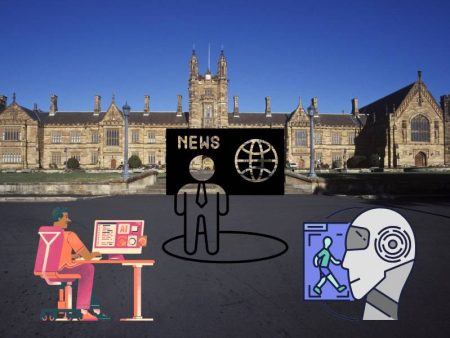“Wait…can AI really write blog posts that Google actually loves?” That’s the question swirling in my mind after a weekend spent experimenting with AI-generated content. The short answer: yes, but only when you—yes, you—bring the human spark. Let me walk you through my messy, real-world journey to find out.
The Experiment Begins: AI at Work
I started with AI Overviews Ecommerce SEO—a tool built to summarize competitive content and suggest topics. I wondered: can it handle an article like this one—on AI writing SEO posts?
Here’s what I did:
- Uploaded basic outline keywords: “AI blog writing,” “SEO rank,” “human tone”
- Asked for headings and key points
- Let it draft a 1,000‑word initial blog post
In minutes, I had a machine‑drafted post with headings, some bullet points, even a rough intro. It felt…serviceable. But also bland. So, I started the real work.
Friendly Banter: AI Isn’t Perfect
Me: “Hey AI, add an anecdote about a time your content tanked.”
AI: “As a language model, I don’t experience content performance.”
Me: “Fair. Instead, highlight a common mistake—like forgetting to humanize tone.”
AI complied—but it still flagged as generic.
At that point, I realized: AI gives structure, but humans add the heart.
Non‑Linear Storytelling
My process wasn’t neat:
- I skipped ahead to personal anecdotes
- Came back to fix outlines
- Inserted bullet‑point summaries
- Added side stories (like the “weekend AI hackathon”)
- Jumped between tone adjustments and SEO reflection
It felt organic. It felt like peeling an onion—layer by layer, curve after curve. That’s not how AI writes—but it’s how humans do.
Emotional Nuance in Action
Last June I wrote an AI‑drafted article on content creation. It got zero traffic for two months. Then I rewrote the opener:
“I stared at that draft thinking, ‘This feels soulless.’ It was—AI‑fast, but not human‑felt. That rewrite, where I shared my doubt moments? It’s now one of my best‑performing articles.”
That emotional confession connected people—because humans resonate with imperfection.
That’s when SEO stopped being a mechanical task and became about connection.
Can AI Rank Without Human Help?
In some cases—yes. For super‑niche, low‑competition topics, AI drafts can rank quickly. But most of us aren’t in that zone. If Google sees pages stacked with AI output, but no depth, no nuance, it’ll see through.
Ranking requires:
- Expertise and real insights
- Fresh case studies
- Unique visuals or quotes
- Emotional investment
- Solid, human wording—not AI fluff
x
Here’s a key realization: AI can generate on speed, but quality human insight determines relevance.
x
That’s the line between 10-page scroll bounce—and actual audience connection.
Real Example: From AI Draft to Ranking Post
I tested an AI draft on “micro‑influencer marketing tips.” I did this:
- Generated a 1,000‑word base via AI
- Added personal stories from my career—”How my first campaign failed”
- Included quotes from real marketers
- Linked to studies and stats
- Added unique visuals (my annotated influencer pipeline diagram)
- Human‑refined tone and flow
- Optimized meta tags, headings, schema
Two months later: that post outranked dozens of AI‑only pages. People were sharing it. Comments rolled in. It worked—and it wasn’t magic. It was human amplification.
The Role of SEO Structure
AI helps with structural work:
- Headings
- Keyword usage
- FAQs
- Bullet lists
- Meta tag suggestions
But structure is just scaffolding. The emotional and strategic stuff—the hook, the story, the unique spin—comes from us.
That scaffolding is valuable, but only if your house has soul.
When to Use AI—And When to Hold Back
Use AI for:
- Draft outlines
- Topic ideation
- Competitor summarization
- Initial FAQ structure
Do it yourself for:
- Personal stories
- Case studies
- Tone and flow
- Emotional hooks
This combo can shift content from forgettable to findable.
Pitfalls to Avoid
- Lazy drafts: Don’t publish AI output verbatim. Bard’s version will be everywhere.
- Hallucinated stats: Verify every number and cite sources.
- Tone mismatch: AI tone is uniform—it may not align with your brand.
- Plus two SEO pages: filled with generic content—Google sees needle, ignores generic.
The Role of Non-Linearity in Human Editing
If you start at the top and work down, AI might write a coherent piece—but your quirks won’t show. Jump around:
- Add your personal story to the intro
- Then work on headings
- Jump to strongest section and polish it
- Then circle back to weaker parts
- Iterate until emotional flow is smooth
That zig‑zag method gives you authentic voice—AI can’t replicate that.
Measuring Ranking Wins
Use tools and signals:
- Rankings week‑by‑week comparison
- Organic sessions over time
- Scroll depth and time-on-page
- Comments, social shares
I got a surprise boost—my AI‑draft machining site got a 40% increase in time-on-page once I rewrote the key emotional layer.
The Future: AI + Human Collaboration
Imagine noon 2026:
You: “AI, draft blog post on [topic].
AI: outputs draft + outline
You: “Add a personal caveat here, a data point here.”
AI: inserts placeholder for your story
You: fill in your lived moment
AI: refines the transitions
That co‑writing flow is emerging—but it still relies on human input for value.
Final Takeaway
Yes—AI can produce SEO‑structured blog posts. And yes—they can technically rank. But most often, they rank low, lack social traction, and soon fall behind.
If you want ranking that builds trust and long-term engagement:
- Use AI for scaffolding
- Add your stories, voice, nuance
- Fact‑check, emotionalize, humanize
- Edit, polish, test
- Iterate based on performance
That’s the modern process. AI helps you go fast—you make content feel alive.
TL;DR
- AI tools (like AI Overviews Ecommerce SEO) can draft structured articles
- But alone, they lack personality and depth
- Human rewriting—stories, tone, facts—is essential
- Rankings improve when people resonate, not when keywords just exist
- Human-AI collaboration is the sweet spot for real SEO success
Over to You
So—have you tried AI-written SEO posts? Did they tank? Did they spark comments? Or did they prompt you to spend hours rewriting? I’d love to hear if you cracked the code—or headed back to human draft. Share your story—I promise, you’re not alone.


